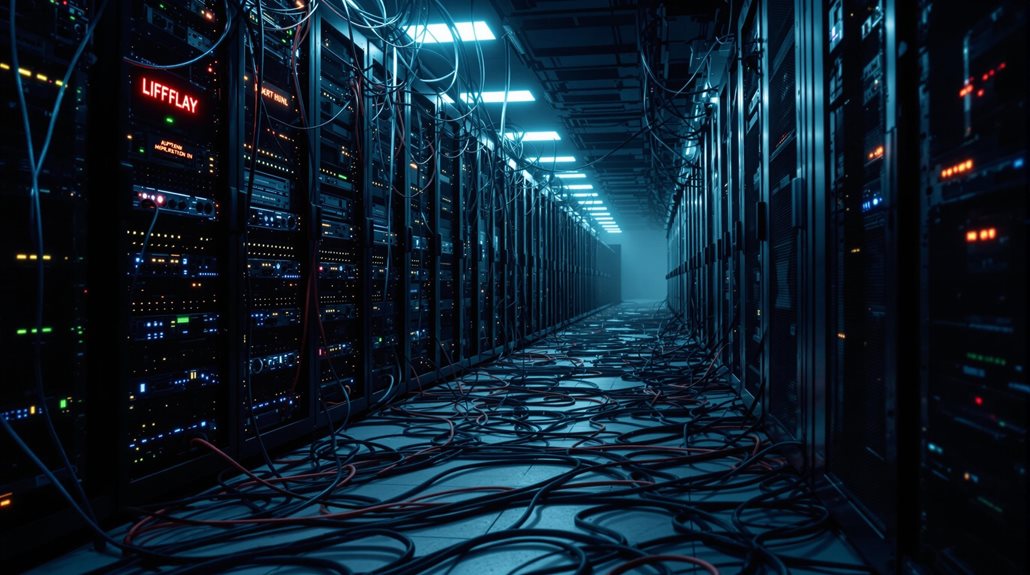Network congestion happens when too many people try to make cryptocurrency transactions at the same time, overwhelming the blockchain system. It's similar to a traffic jam on a busy highway. When networks get congested, transactions become slower and fees increase as users compete to get their transactions processed first. This has affected major cryptocurrencies like Bitcoin and Ethereum at various times. Understanding network congestion reveals key challenges facing cryptocurrency adoption and scaling.

As cryptocurrency networks continue to grow in popularity, they're facing a common problem called network congestion. This happens when too many people try to use the network at once, and it can't handle all the transactions. It's like a traffic jam on a highway – when there are too many cars, everything slows down.
Network congestion occurs because blockchains have limits on how many transactions they can process at once. These limits come from things like block sizes and how quickly new blocks can be created. When lots of people start trading crypto, launching new tokens, or using blockchain apps, the network can get overwhelmed. Unprocessed transactions stack up in the growing mempool size while waiting to be included in the next block. Fixed-sized blocks determine how many transactions can be processed in each round.
The effects of congestion can be pretty frustrating for users. When networks get clogged, transactions take longer to process, and fees go up as people compete to get their transactions processed first. This makes the whole system less reliable and can even cause cryptocurrency prices to swing up and down rapidly. Poor internet connections and network latency can make the situation worse, leading to data flow issues.
Major cryptocurrencies have faced serious congestion problems. Bitcoin had a major slowdown in December 2017 when its popularity exploded. Ethereum struggled with congestion during the ICO boom in 2017-2018, when transaction fees shot up to over $100. More recently, in spring 2023, Bitcoin's network got jammed up because of something called BRC-20 tokens. Even newer networks like Solana haven't been immune, experiencing complete shutdowns due to too much traffic.
The crypto community isn't sitting idle, though. They're working on several ways to fix these congestion problems. One solution is called layer-2 scaling, which includes technologies like Bitcoin's Lightning Network that help process transactions faster. Other approaches include making blocks bigger to fit more transactions, splitting the blockchain into smaller pieces (called sharding), and creating better ways to handle transaction fees. These solutions work by processing transactions off-chain processing before recording them on the main blockchain.
Network congestion isn't just a technical problem – it's also a security concern. When networks get congested, they become more vulnerable to certain types of attacks, like double-spending, where someone tries to use the same crypto twice. That's why finding solutions to congestion is so important for the future of cryptocurrencies.
The challenge of network congestion shows how cryptocurrency technology is still evolving. As more people start using cryptocurrencies, networks need to find ways to handle increased traffic without sacrificing security or making things too expensive for regular users. It's a balance between growing the network and keeping it working smoothly for everyone.
Frequently Asked Questions
How Can I Predict When Network Congestion Will Occur on a Blockchain?
Network congestion can be predicted by monitoring several key indicators.
Blockchain explorers track transaction volumes and mempool size, showing how busy the network is.
Machine learning models analyze historical patterns and real-time data to forecast future congestion.
Major events like token launches or airdrops often lead to network slowdowns.
Gas price trends and fee spikes can also signal upcoming congestion.
Professional monitoring tools provide alerts when congestion is likely.
Which Cryptocurrencies Are Least Affected by Network Congestion Issues?
Cryptocurrencies like Nano and IOTA are least affected by network congestion since they don't use traditional blockchain structures.
Fantom and Avalanche handle congestion well with their fast 1-2 second transactions and high capacity.
Algorand's pure proof-of-stake system keeps its network running smoothly even during busy times.
These networks use different tech solutions that let them process lots of transactions quickly without slowing down or getting backed up.
Does Running a Node Help Reduce Network Congestion?
Running a node doesn't directly reduce network congestion, but it helps in other important ways.
While nodes contribute to network decentralization and security, they don't increase the network's capacity to process more transactions.
Think of it like adding more traffic monitors to a highway – it helps track and validate traffic flow, but doesn't add more lanes.
Nodes do help distribute the existing transaction load more evenly across the network.
Can Network Congestion Cause Permanent Loss of Cryptocurrency Transactions?
Network congestion doesn't cause permanent loss of cryptocurrency transactions.
When a transaction gets stuck due to congestion, it'll either eventually go through or drop from the mempool. If dropped, the funds stay in the original wallet and haven't moved. It's like the transaction never happened.
Users can then try sending it again, possibly with higher fees. The network's design guarantees transactions can't just disappear forever.
How Long Does Typical Network Congestion Last in Major Blockchain Networks?
Network congestion in Bitcoin typically lasts 10-60 minutes for regular transactions, though it can stretch to days during busy periods.
The longest congestion happened in December 2023, with over 194,000 pending transactions.
For Ethereum, congestion times vary based on network activity and gas prices.
During high-demand periods, like the 2021 DeFi boom, both networks saw extended delays.
Recently, new technology upgrades have helped reduce these wait times.





